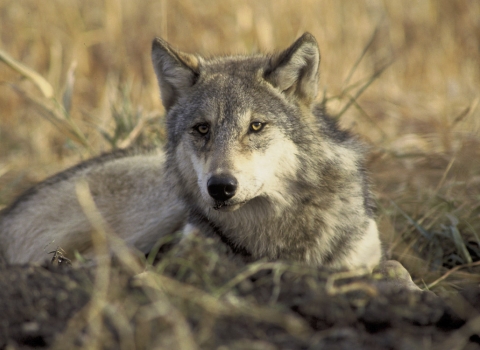CHENEY, Wash. – The U.S. Fish and Wildlife Service (Service) plans to conduct prescribed burns at Turnbull National Wildlife Refuge near Cheney starting in October. Refuge fire staff will continue to apply prescribed fire through February, depending on weather and environmental conditions. These prescribed fires will reduce the risk of wildfire on the refuge and help restore native habitat. Smoke may be visible during the prescribed burns; the refuge will provide community updates on its website when a prescribed burn prescribed burn
A prescribed burn is the controlled use of fire to restore wildlife habitat, reduce wildfire risk, or achieve other habitat management goals. We have been using prescribed burn techniques to improve species habitat since the 1930s.
Learn more about prescribed burn is taking place.
“Safety is the number one priority during a prescribed burn,” said Project Leader Kelly Moroney. “We will work with federal, state, and county agencies and departments to complete these prescribed fire projects throughout the next several months.”
Refuge managers work with the Service’s highly skilled fire management professionals and wildland firefighters to develop and implement a detailed burn plan. This includes strict safety measures, such as a pre- and post-burn monitoring plan, identifying the ideal weather and wind conditions for the prescribed fire to take place, and tracking the air quality in the area. Burning will only occur when weather conditions and smoke dispersion are favorable. Because of the important role weather plays, managers identify a burn window – a specific length of time during which a prescribed fire might take place. The official day of the fire is not set until a day or few days before to ensure optimum conditions for the prescribed fire. This limits fire intensity and impacts to air quality. To ensure public and firefighter safety, roads and public use areas may need to close temporarily as operations are taking place.
Prescribed burn operations represent many months and sometimes years of planning and preparation. On the refuge, prescribed burning takes place after tree thinning and piling to manage vegetation that could fuel future wildfires. This is an important part of the refuge’s habitat management planning and has occurred on the refuge for many years. Scientific evidence over the last several decades has illustrated the beneficial role low-intensity fires play in fire-dependent forests like those on the refuge. Prescribed fire, when used strategically and repeatedly, helps sustain healthy ecosystems, reduces the risk of catastrophic wildfires, and reduces the severity of future wildfires when they do occur, which can help keep communities and firefighters safer.
Turnbull National Wildlife Refuge encompasses over 23,000 acres in eastern Washington on the edge of the Columbia River Basin. Ponderosa pine, wetlands, meadow steppe and riparian riparian
Definition of riparian habitat or riparian areas.
Learn more about riparian habitat dominate the landscape and provide a home for herds of elk, moose, river otters, beavers, and over 180 bird species including migrating and nesting waterfowl.
For more information about the refuge or planned prescribed burns, please contact Turnbull National Wildlife Refuge Headquarters, at 509-235-4723.


